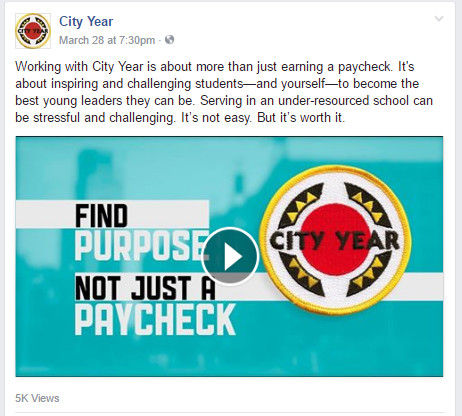Nonprofit Marketing: A Unique Social Strategy
- AndrewHaleyStudio

- Apr 9, 2017
- 3 min read

Nonprofits are faced with many challenges similar to traditional businesses: both are trying to broadcast a message to a large audience. However, nonprofits are faced with significant challenges because the budget on social media marketing is drastically limited. While there are many differences, the strategy of nonprofits aim to inspire and motivate a call to action, not to increase sales and revenue like traditional businesses.
Communication is key: A social strategy for nonprofits is aimed around the mission statement, where there is a close resemblance of specific call to actions catered around the needs of a nonprofit. Below is a list of five communication targets that are vital for nonprofits.
Engaging community
Recruiting volunteers
Acquiring and retaining donors
Cultivating brand awareness
Establishing thought leadership
Strategy for many nonprofits usually includes a tight budget, which means it is very important to be knowledgeable about where the potential audience is, as well as their needs and wants. Unlike traditional social strategy, there is an opportunity to spark many people about the work nonprofits do and their unique mission.
Nonprofit Facebook Post:

Here is an example of how AmeriCorps program, City Year has gone about their strategy of social media marketing. The Facebook post is an awareness and motivational video aimed towards gathering potential volunteers, as well as letting a larger audience know what the program offers.
Make it about the people: Every nonprofit and business has a purpose, as well as an audience who is interested in them in some way. Nonprofits use their social channels differently — they make it about the people that they are helping directly. They do this by having different testimonials, visual stories, volunteer videos, and a clear goal of the nonprofit. One unique way many nonprofits grow through social is creating a volunteer social corps, which is user generated content from the service members themselves.
“Non-profits must find a way to tap into and utilize the passionate amateurs who surround their brands. Frequently, there are people who are more than willing to donate their time and expertise to your cause. Find a way to tap into their energy and put them to work. Ask them to attend events and shoot photos or video. Invite them to blog. Hold a monthly meeting and ask for their ideas. These people represent a powerful force with amazing energy just waiting to be tapped into. What are you waiting for?”
– Sean McGinnis, Founder 312digital
Lets talk facts:
Appreciation -1/3 of your social updates should recognize your donors, supporters, volunteers, and employees
Advocacy - 1/3 should engage and share with the content of other groups or nonprofits who are relevant to your area
Appeals -1/3 should solicit donations or ask for help towards a goal
Creating a nonprofit social strategy:
1. What is the purpose of pursuing a social strategy?
Events, donations, awareness, user generated content
2. Who is your audience?
Determine messaging techniques, understand interest of volunteers and potential donors
Think about their age, location, economic background, and what they likely think of your nonprofit
3. What platform works best?
Determine what other nonprofits like you are doing as well as where your potential volunteers and donors are
Facebook and YouTube are able to deliver to a wide audience, where user generated content can be easily generated and published
4. What data is important?
Donation engagement and tracking, number of new volunteers, tracking of a specific event
5. What makes it unique?
Important to show your audience what makes your nonprofit special, where they would feel inclined to interact on social and in person
Creating a special and fun hashtag for your nonprofit, where you can set up different and engaging campaigns
Conclusion: Overall, nonprofits have the ability to spread a unique message to many audiences which include volunteers, donors, and those interested in a specific cause. A social approach of nonprofits revolves around people, where there are many opportunities to broadcast user generated content of volunteers, creating an emotional connection across social channels. While there is usually a limited budget, this is where creativity kicks in. Nonprofits have a unique roll in carrying out the word about their purpose. Their social strategy can be spread across many platforms, where their content can change based on their specific needs, events, and stories from volunteers.
.png)



Comments